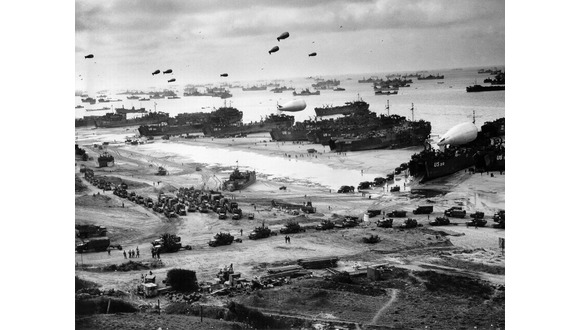Thu, 09 February, 2023
Recent research carried out to celebrate 100 years of The Welding Institute has revealed some intriguing connections between TWI, the 1944 World War II Allied invasion of German-occupied Western Europe, and the foundations of the modern oil and gas industry.
The story begins in 1942 and the planning for Operation Overlord, which would eventually begin on 6 June 1944 with the D-Day landings in Normandy. While the first landings would include troops going ashore with jerry cans of fuel, as the operation continued there would be a need to supply forces with oil for their vehicles.
While tankers could be used, another solution was to lay subsea pipelines between Britain and France that deliver the oil. However, at this time, such pipelines had only been laid over short distances, so the challenge of laying these pipes in a single night, across large distances and in tidal conditions needed to be met.
This led to two different pipeline designs, the ‘Hais’ and the ‘Hamel’ pipelines, which were named for their inventors. It is the Hamel pipe that has ties to TWI and the Institute of Welding as it used flash butt welding. This technique was investigated by a committee of the then Institute of Welding in 1938, along with electric arc welding and oxy-acetylene welding as methods for joining pipes. Further research was undertaken in the early 1940s, with acknowledgement given in related papers to Stewarts and Lloyds, the company who were tasked with manufacturing the Hamel pipelines for Operation PLUTO.

The pipelines were connected to camouflaged pumping stations on the Isle of Wight and at Dungeness of the Kent coast and then at Cherbourg and Boulogne in France, with a fake oil dock also built at Dover as a ruse to confound the Axis powers.
These pipelines were deployed with varying levels of success, yet they managed to deliver around 8% of the petroleum products used by the Allied forces in North West Europe.
While this was, in itself, an amazing feat of engineering it also established pipe welding, pipe coiling and large-scale subsea pipeline laying. These core technologies, which were in part developed by The Institute of Welding (a forerunner to today’s Welding Institute), enabled the development of later offshore oil and gas exploitation and the growth of the subsea oil and gas industry, which became a cornerstone of TWI’s work in the 1960s and 1970s.
If you are interested in this topic, you can see a more in-depth exploration of this history on The Welding Institute website as part of their centenary celebrations, here.
You can also see archive footage of the development of the Hamel pipelines, below: